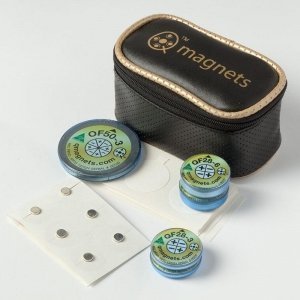Last week I had the pleasure of meeting a physiotherapist who was the coach of a triathlete club. Seeing we have had a number of professional triathletes and ironmen having great results with Q Magnets, I thought it might be a good opportunity for some of the local clubs to receive the same benefits. To my surprise I was quickly dismissed, since in this physio’s opinion, magnets penetrate less than 1cm (2/5 of an inch) and so are of little use.
Even though I observed Q Magnets tested in a university quantum physics lab penetrating over 4cm, I thought it would be best to set up a simple demonstration to easily prove their depth of penetration. So I took a printed copy of the 351 page report called Static Fields, a WHO document which is by far the most thorough health risk assessment ever undertaken for static magnetic fields and placed a Q Magnet (QF28-6) on either side . By the way, if sceptics took the time to read it, they would see how misinformed comments like “static magnets have no effect on human tissue” or “they only penetrate 1cm” are.

Picture showing depth of penetration of QF28-6 at over 2.2cm
The picture above is the WHO document, which I measured as 2.2cm (roughly 1 inch) thick with a QF28-6 on either side. The force of the magnetic field is easily strong enough for the bottom Q Magnet to overcome the force of gravity and remain hanging stationary underneath.
So there is no doubt that the QF28-6 penetrates deeper than 2.2cm, but the question remains what strength of field or magnetic field gradient is required to have an effect.
Image showing Q Magnets penetrating at least 2.2cm






